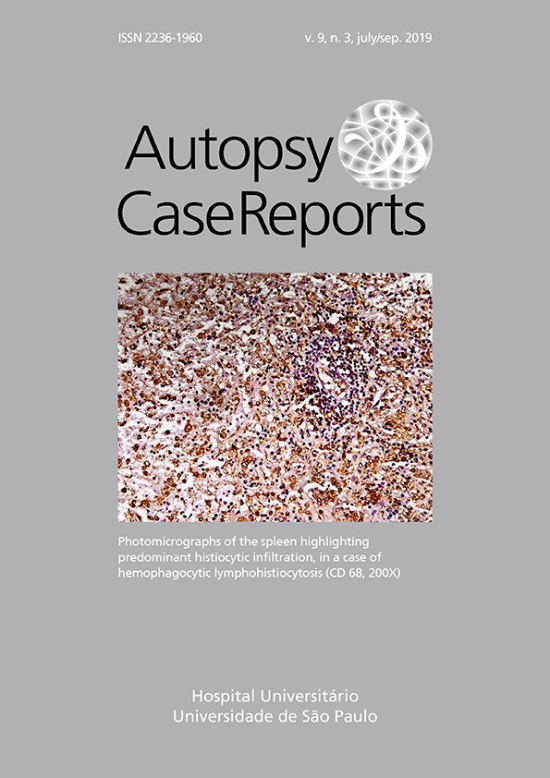Fatal familial hemophagocytic lymphohistiocytosis with perforin gene (PRF1) mutation and EBV-associated T-cell lymphoproliferative disorder of the thyroid
DOI:
https://doi.org/10.4322/acr.2019.101Keywords:
Epstein–Barr Virus Nuclear Antigens, Familial Hemophagocytic Lymphohistiocytosis, Lymphoma, Perforin Gene MutationAbstract
Familial hemophagocytic lymphohistiocytosis (FHL) is a rare fatal autosomal recessive disorder of immune dysregulation. The disease presents most commonly in the first year of life; however, symptomatic presentation throughout childhood and adulthood has also been identified. Biallelic mutation in the perforin gene is present in 20%–50% of all cases of FHL. Secondary hemophagocytic lymphohistiocytosis (HLH) in association with hematological malignancies is known; however, whether mutations in HLH-associated genes can be associated with FHL and hematolymphoid neoplasms is not well documented. Also, Epstein–Barr-virus- (EBV) positive systemic T-cell lymphoproliferative disease (SE-LPD) in the setting of FHL is not clearly understood. Here, we present the case of a young boy who presented with typical features of childhood FHL harboring the perforin gene (PRF1) mutation, and had SE-LPD diagnosed on autopsy, along with evidence of recent EBV infection. The patient expired due to progressive disease. Five siblings died in the second or third decade of life with undiagnosed disease. Genetic counseling was provided to the two surviving siblings and parents, but they could not afford genetic testing. One surviving sibling has intermittent fever and is on close follow-up for possible bone marrow transplantation.
Downloads
Published
Issue
Section
License
Copyright
Authors of articles published by Autopsy and Case Report retain the copyright of their work without restrictions, licensing it under the Creative Commons Attribution License - CC-BY, which allows articles to be re-used and re-distributed without restriction, as long as the original work is correctly cited.



